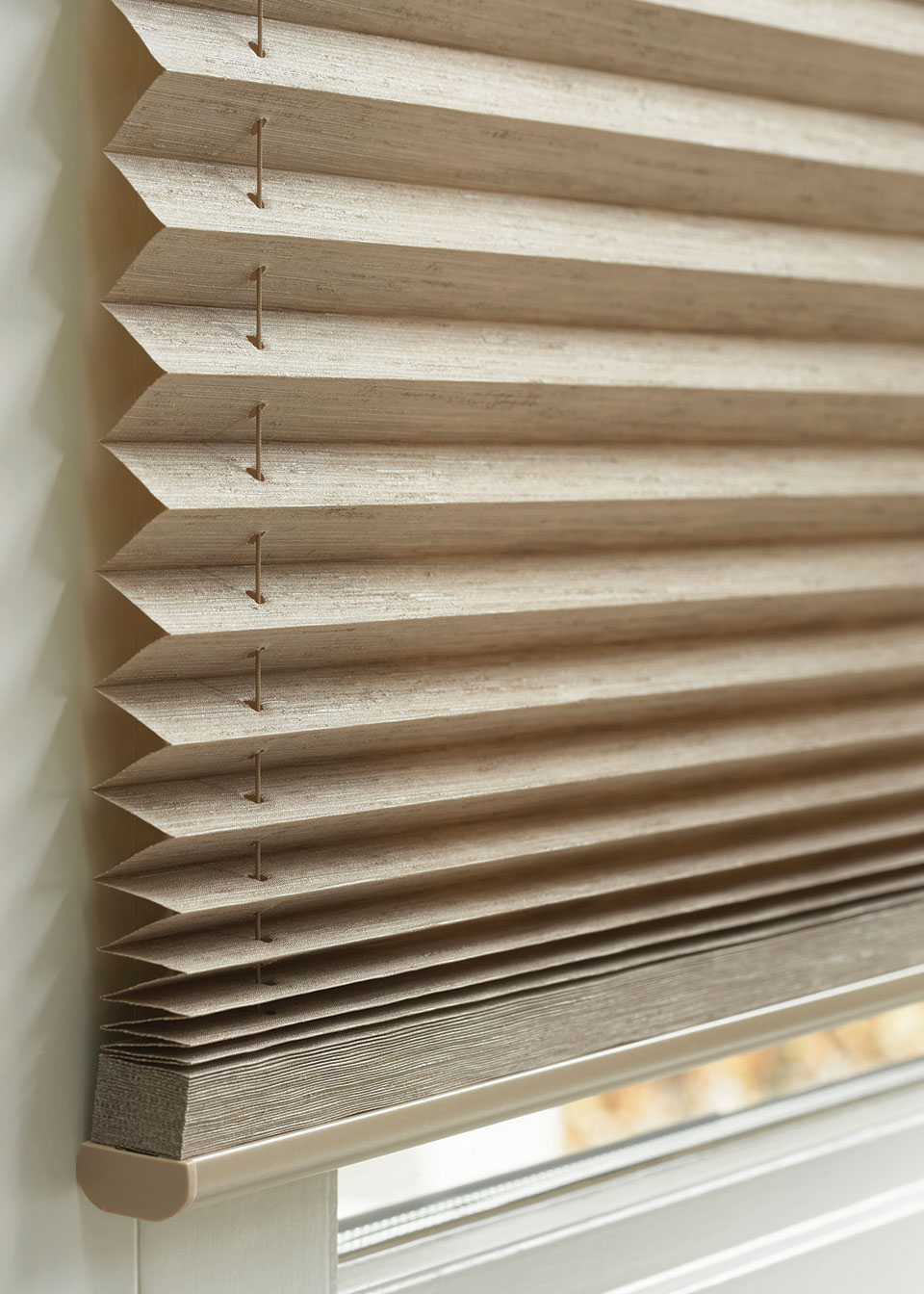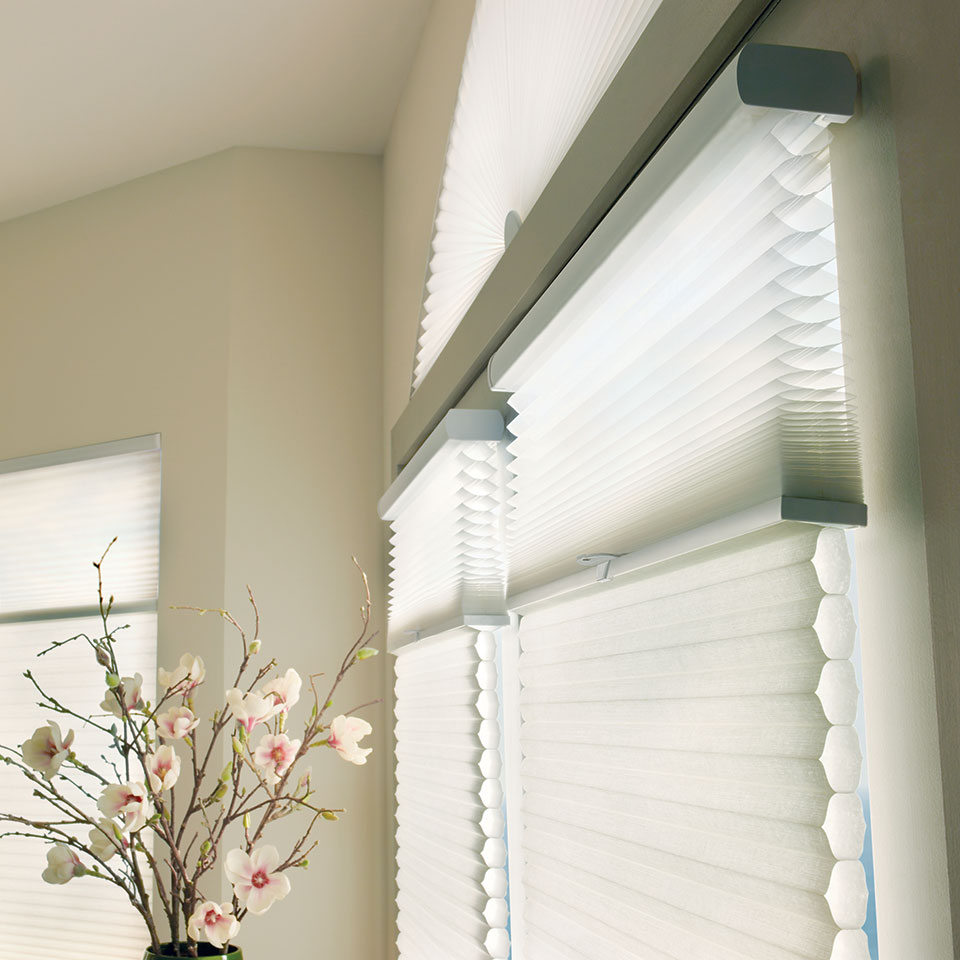At first glance, cellular and pleated shades look pretty similar. They’re both constructed from pleated fabrics; some are woven and some are not woven. Both are typically sold as what we in the industry call “top down, bottom up” shades, which means they can be raised, lowered, or left somewhere in between.
So, what’s the difference between cellular and pleated shades?
Think of pleated shades as the grandfather of cellular shades. They’re made from one layer of pleated fabric, so they provide some light control but very little insulation. You can get them lined with a light-filtering or room-darkening backing to have more control over the level of light and glare that enters the room.

Fast Facts: Pleated Shades
- Single layer of fabric, typically woven
- Can be lined to filter light or darken a room
- Available in a variety of styles and textures
- Cheaper than cellular shades
- Do not insulate as well as cellular shades
- Offered with continuous cord loops or cordless options—no long, unattractive cords dangling on the ground, where kids and pets can reach them
- Can be motorized to be raised and lowered with the touch of a button!
Cellular shades were developed in the 1970s specifically to improve upon pleated shades’ energy efficiency. Also known as honeycomb shades, cellular shades are constructed with two or more layers of fabric that form a central air pocket in the shape of a honeycomb. The extra layers add insulation, which means in the winter they resist window heat loss, and in the summer they reduce window heat.

Fast Facts: Cellular Shades
- Come in single, double, or triple honeycombs (2-6 layers of fabric), typically nonwoven
- More expensive upfront than pleated shades
- Were created specifically to be more energy efficient, saving energy costs in the long run
- Provide high-quality insulation from both summer heat and winter chill
- Pleats come in a variety of sizes (3/8”, 1/2”, 3/4”, and 1 1/4”), and can be lined for extra darkening effect
- Stack tightly when raised, so the window looks uncovered and open
- Have no visible cord holes, creating a neat, streamlined appearance
- Come in wide widths for wider windows
How is energy efficiency measured for cellular and pleated shades?
There are two things to remember when it comes to window covering energy efficiency tests. For winter, it’s R-values. For summer, it’s the shading coefficient.
The R-value measures a product’s ability to resist heat loss. The higher your R-value, the better your insulation. The R-value of a single layer of uncovered window glass is approximately 1.75. A regular pleated shade has an R-value of roughly 2.20. A single cellular shade, in comparison, has an R-value ranging from 3.50 to 4.30. And a double or triple honeycomb shade? It’ll have an astonishing R-value of 4.80.
The shading coefficient, on the other hand, measures the reduction in window heat. For this one, the lower the number, the more efficient your shade is. A regular pleated shade has a shading coefficient of roughly .60. Cellular shades’ coefficients vary, but range from .43 for a semi-opaque shade to .35 (or even .21!) for an opaque fabric or a multiple honeycomb shade. That means that if you get cellular instead of regular pleated shades, you’ll have a more than 80% reduction in window heat.
Ready to learn more about window coverings or the benefits of energy-efficient pleated shades, cellular shades, and honeycomb shades? Stop by Strickland’s showroom today to speak with one of our window treatment experts.